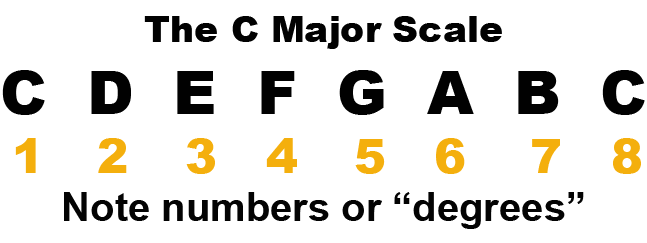Practice Tracks for ZoomGuitar
Basic Chord Theory
The core concept of "Basic Chord Theory" is that you can play along with many popular songs by learning just a limited number of chords. They are not the same chords for different keys, but they follow the same pattern for all keys.
What is a "Key"?
A "Key" refers to a range of notes that have a specific starting point. This starting point ("root" or "tonic")is based on a specific Major Scale. For example, the key of C is based on the C Major Scale. The key of D is based on the D Major Scale, and so on.
Each of the notes in a major scale are given a number. For example, for the C Major Scale the note C is the 1 note. D is the 2 note, E the 3 note, and so on.

The chords that "fit" a song written in a specific key are based on and are rooted in the notes of the scale. These chords are referred to by their root note. For example, for a song in the key of G the G Major Chord is the "1 Chord", C Major is the "4 Chord", and so on.
What is the Pattern that works for most songs?
The pattern is known as 1-4-5. The chords for each key are the "1" Chord, "4" Chord, and "5" Chord. This is often written in Roman Numerals: I-IV-V. So, for a song written in the key of C, the I Chord is C, the IV Chord is F, and the V Chord is G
This makes it easy to strum along with many songs, simply by using the I, IV and V chords (in the appropriate places in the song.) Often a song will include a minor key as well. It will usually be the 2 (ii) or 6 (vi) chord. For the key of C these additional minor chords are D minor (ii) and A minor (vi). As you can see from the chart below, the two minor chords for D are Em (ii) and Bm (vi). For G they are Am (ii) and Em (vi).
Here is a chart of the important chords for three popular keys:

MuzicTrain.com
